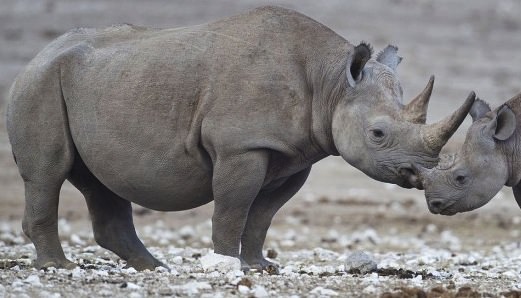A new landmark study, published last week in Science, has found that the current rate of species extinctions is more than 1,000 times greater than their natural rate, calculated from the fossil record and genetic data spanning millions of years, according to the Center for Biological Diversity.
The new study used the fossil record and genetic data to determine that species of plants and animals are going extinct 1,000 times faster than their natural rate—that is, when humans arrived.
“This important study confirms that species are going extinct at a pace not seen in tens of millions of years, and unlike past extinction events, the cause is us,” said Noah Greenwald, endangered species director with the Center for Biological Diversity. “The loss of species has drastic consequences for us all by degrading ecosystems that clean our air and water and are a source of food and medicine, and by making our world less interesting and a more lonely place. This study underscores the importance of laws like the Endangered Species Act and the need for swift action to reverse the disturbing trend of extinction.”
In likely the most comprehensive assessment of species extinction rates yet, the study led by acclaimed conservation biologist Dr. Stuart Pimm of Duke University found the rate at which mammals, birds and amphibians are moving toward extinction over the past four decades would have been 20 percent higher were it not for conservation efforts.
The study uses newly available data on species distributions and imperilment to quantify the current extinction rate, which was estimated to be at least 100 extinctions per million species-years. The researchers then analyzed extensive data on rates of speciation and extinction over millions of years to estimate a background or natural rate of extinction of .1 extinctions per million species-years, leading to the new estimate that we have increased the rate of extinction by at least 1,000 times.
This estimate is considered conservative because of the large number of species still unknown to science, the fact that a majority of such species are likely to be rare and at risk, and uncertainties in predicting future extinctions given increased habitat destruction, spread of invasive species and diseases, and global warming.
“The findings of this study are alarming to say the least,” said Greenwald. “But it also shows we can make a difference if we choose to and should be a clarion call to take action to protect more habitat for species besides our own and to check our own population growth and consumption.”
The study further notes that some groups of species are going extinct at even greater rates. North American freshwater fishes, for example, were found to be going extinct at a rate of 305 extinctions per million species-years, or more than 3,000 times greater than the background rate, and the continent’s snails and slugs are going extinct at a rate nearly 10,000 times background. These high rates reflect the degree to which we have degraded rivers and lakes in North America with dams, pollution, spread of non-native species and direct destruction.
“There can be no question that we’re fouling our own nest, but what this study shows is that this has consequences not just for us, but for the millions of other species with which we share this world,” said Greenwald.
Canadajournal/Agencies
 Canada Journal – News of the World Articles and videos to bring you the biggest Canadian news stories from across the country every day
Canada Journal – News of the World Articles and videos to bring you the biggest Canadian news stories from across the country every day



